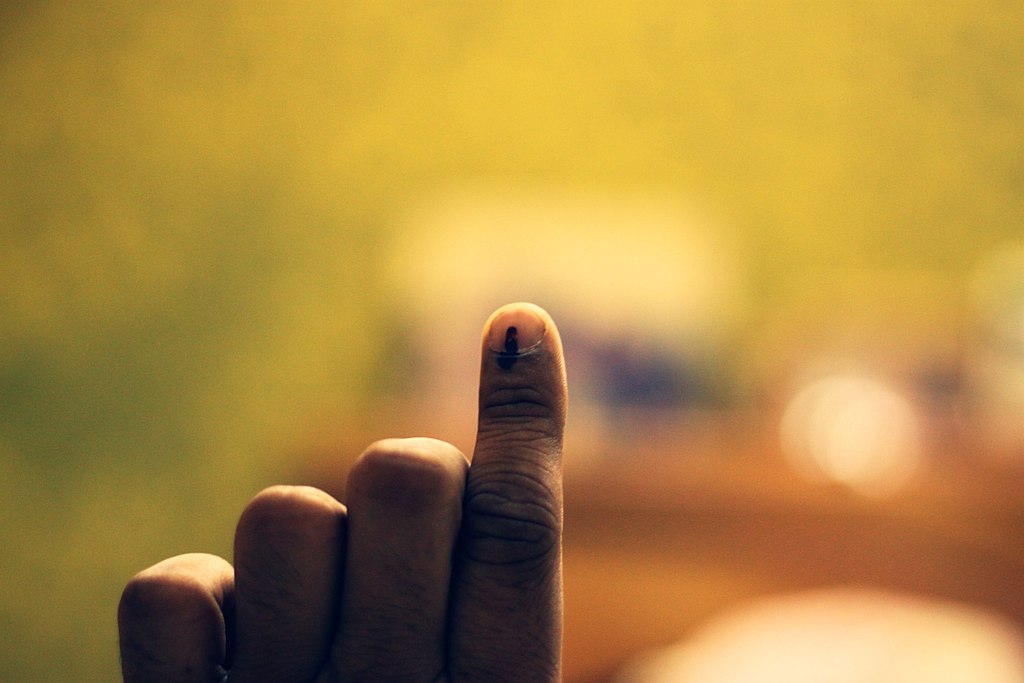In the recently concluded General Elections to the Lok Sabha, BJP and its alliance partner JD(S) won 19 of the 28 seats on offer in Karnataka. The Indian National Congress (INC) won the remaining nine.

There have been a lot of analyses about the reasons for these results. Here we look at the vote share and the margins to analyse the results and what they tell us about how people vote.
How close was the contest?
To analyse how close a contest was we look at the difference in vote share between the winner and the runner-up in a constituency. If the winner had a vote-share of 50% and the runner-up 47%, this difference would be 3 percentage points. We use this metric and classify the contests into five categories by how close they were. The 28 constituencies also fall into each bucket as below:
| Vote share difference | Closeness of contest | Num of constituencies |
| < 2% | By a whisker (extremely close) | 1 |
| 2-5% | Very close contest | 6 |
| 5-10% | Close | 8 |
| 10-20% | Comfortable win for the winner | 10 |
| > 20% | Landslide win (no contest) | 3 |
By these metrics, we can see that it in almost half the constituencies the winner had a smooth sailing. In 75% of the constituencies the difference in margin was more than 5%. Given that a constituency on average has 10 to 12 Lakh voters, the margin was more than 60,000 votes in 75% of the constituencies.
Only one constituency, Davanagere saw a very close battle where the INC candidate won by a margin of 1.98% or around 26,000 votes. A look at the map also shows that the Kalyana Karnataka region was where the contests were closely fought.

A closer look tells us that most of the seats won by INC were close, very close or won by a whisker, while the NDA coasted to victory in most of its constituencies. Indeed, the median vote share difference for INC was 6.14% points, while the corresponding number for NDA was 10.68 percentage points. Their victories were in completely different classes!

In the above map, the orange constituencies represent those won by NDA and the blue by INC. A lighter shading represents a closer contest. The INC had a comfortable win in just two constituencies – Bidar and Chamarajanagar, and close wins in three. In the remaining four, it had to fight it out in close margins of less than 50,000 votes. In contrast, the NDA had a very close battles in just 3 of the 17 constituencies it won, while it had landslide wins in three!
| Type of victory | NDA | INC |
| By a whisker (extremely close) | 0 | 1 |
| Very close contest | 3 | 3 |
| Close | 5 | 3 |
| Comfortable win for the winner | 8 | 2 |
| Landslide win (no contest) | 3 | 0 |
Incidentally, in Hassan where the opponent was Prajwal Revanna who is currently in SIT custody over sexual assault charges, the INC candidate Shreyas Patel won by a margin of only 42,600 votes.
This suggests that voters voted predominantly for the NDA. The main narrative is that the five guarantees did not help the INC much. But, did they really not make a difference?
Vote shares over the years
Looking at the vote shares in elections over the past 15-20 years we see a trend that the electorate largely prefers the BJP in Lok Sabha elections.

As can be seen above, the BJP has always had a larger vote-share over the Congress since 2004. Only in 2014 was the lead the smallest, but even then the INC won only 6 of the 28 seats, while the BJP won 17. The vote-share of the INC in the current Lok Sabha elections is the highest it has seen in the past 20 years, but it was enough to win only 9 seats and equal its performance in 2014.

The five guarantees seem to have had an effect on the vote share, but not significant enough to swing seats.
However, the narrative completely reverses itself when the assembly elections are considered, which is where the five guarantees were introduced.

Despite the difference in vote share between the parties being so small, the results in terms of seats have swung widely between the two parties.

What we can see is that, in the last 2 decades, voters has preferred the INC over the BJP in assembly elections, and the BJP over the INC in Lok Sabha elections. Poll planks like the five guarantees might have worked in the assembly elections, but voters in Karnataka seem to vote differently and take different things into consideration based on the type of elections they are voting in.

